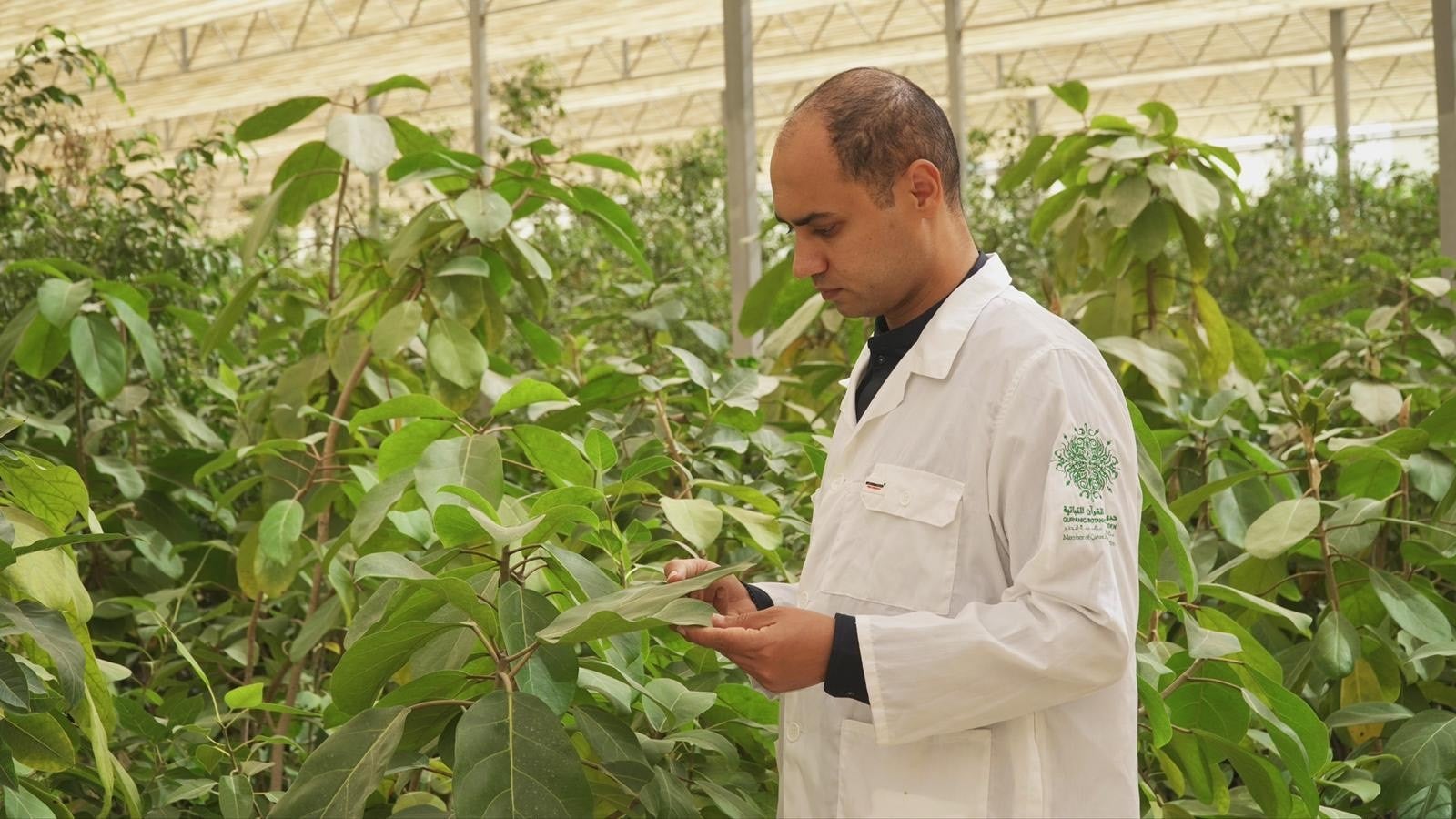
Many community members struggle to successfully grow plants, both indoor and outdoor varieties, because they may lack the knowledge to raise and care for species able to withstand the summer’s severe heat waves or survive in the shade when temperatures are high.
Mohamed Hassouna, a horticultural specialist at the Qur’anic Botanic Garden, provides tips on growing plants in hot climates.
How can we distinguish plants that tolerate high temperatures before making a purchase?
All tropical and semi-tropical plants tolerate high temperatures to a certain extent. If you are planting indoors, it is preferable to acquire plants with thick leaves that store water to survive heat waves. When it comes to gardens and open balconies, the most suitable plants include climbers such as bougainvillea and flowering shrubs such as the Indian or aromatic jasmine.
How can we determine whether a plant is suffering from heat?
A plant is considered to be suffering from heat or stress due to extreme temperatures when the edges of its leaves become burned and curled, or when its leaves start wilting and its color changes to light green or pale yellow.
How can we take proper care of plants during high temperatures?
You should focus on watering plants moderately and regularly. You should also pay attention to fertilizing the plant with beneficial acids such as humic and amino acids, which help reduce heat stress in plants.
How do we determine the quantity of water a plant needs? What is the right time to irrigate during hot weather?
Observing plant leaves is the best approach to determine the plant’s health. If the leaves are wilted or sluggish, the plant must be irrigated immediately. It is also preferable to irrigate the plant if the surface of the soil is dry. You can dip a finger in the soil to check its moisture. In general, it is best to water plants in the early morning or at sunset.
Does excessive watering cause harm to the plant?
Yes, excessive watering causes problems for plants, and may completely damage a plant’s roots.
How do we keep plants safe when the sun is high and bright?
Plants should not be placed in direct sunlight as this causes burns to parts of the leaves. It is preferable to place them in a place with no direct exposure to sunlight. It is also preferable to moderately water indoor plants with exposure to air conditioning, irrigating them once a week.
What is the appropriate fertilizer for houseplants?
Liquid nutrient solutions sold in diluted concentration are recommended. If these solutions are in concentrated form, they must be diluted with water. Many nutrient solutions can also be easily and safely prepared at home using ingredients such as egg shells, banana peels, coffee leftovers, baking solutions, and vinegar, among other ingredients.
Can we prune plants in the summer?
Yes, we can prune some plants, but with caution. High heat leads to irritation which causes the plant sap to seep out, negatively affecting the plant health by attracting harmful fungi and bacteria that attack the plant and cause disease. Therefore, the preferred season to prune plants in hot climates is winter, when cuts can be replanted.
How do we plant seeds during high temperatures?
Planting seeds should be done when temperatures are lower than 30°C to avoid quick growth after germination, which causes death or the fall of the seedlings. Make sure to place plants in the shade and to water them in the early morning or at sunset. It is also preferable to use treated soil that contains perlite to retain water for a longer period.





